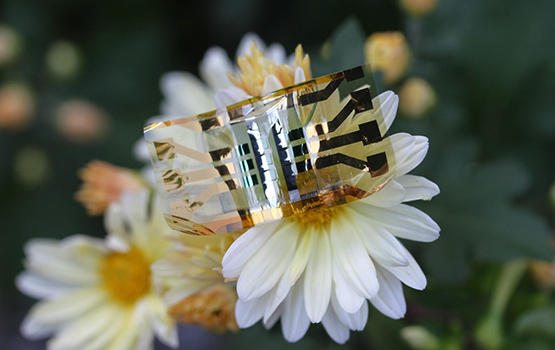This ultraflexible organic solar cell (OSC), or flexible organic photovoltaic (OPV), is 10 times thinner than the width of a human hair and approximately the size of a 5c piece, only far more useful. What is more, the cell is as flexible as a mining magnate’s accountant, bendable, foldable and stretchable.
The cell is the focus of twin research papers published in Joule and PNAS (Proceedings of the National Academy of Sciences of the USA). In the former paper, researchers developed the cell, made from mechanically robust photo-absorber materials, to achieve a power conversion efficiency of 13% with 97% efficiency retention after 1000 bending cycles, and 90% efficiency retention after 1000 stretching cycles.
“Power conversion efficiency considers how much solar energy can be converted into electricity. The solar energy illuminated on Earth is 1000 watts per square metre. Our device can produce 130 watts of electricity per square metre. The 13% efficiency we were able to achieve is one of the highest efficiencies in organic solar cells,” Dr Wenchao Huang, Research Fellow in Monash University’s Department of Materials Science and Engineering, said.
In the latter paper, it was shown that a cell based on nonfullerene blends and given a postannealing treatment could last for extensive periods of time with minimal degradation. The shelf-life is estimated at 11.5 years.
The solar cell is so light that it can be supported by a flower petal, and still generate almost 10 watts of power per gram. The solar cell’s potential is staggering. As we envisage our technological future today, we imagine mobile phones, watches, the internet of things (IoT), and medical (or fitness) biosensors as being powered by batteries (hopefully renewably sourced), but what if advanced photovoltaics such as this ultrathin and flexible solar cell could replace the battery in said devices?
Ultra Brave New World
As we know, solar PV is a rapidly advancing technology, but perhaps one area in which classic silicon-based solar cells have stalled is their brittle nature, especially because the highly crystalline or aggregated microstructures thought critical to efficiency render a rigid active layer. This development is a Brave New World.
“Our ultra-flexible solar cells can simultaneously achieve an improved power conversion efficiency, excellent mechanical properties and robust stability,” said Huang. “This makes them a very promising candidate as a power source in wearable electronics to realise long-term monitoring of various physiological signals, such as heart and breathing rates.”
The team, composed of researchers from the Renewable Energy Laboratory of Monash University, the Australian Synchroton, the University of California and the University of Tokyo, are now setting their sites on commercialisation; which shouldn’t be too difficult considering the cell is low-cost and can be reproduced at scale with continuous printing technology.
This content is protected by copyright and may not be reused. If you want to cooperate with us and would like to reuse some of our content, please contact: editors@pv-magazine.com.









1 comment
By submitting this form you agree to pv magazine using your data for the purposes of publishing your comment.
Your personal data will only be disclosed or otherwise transmitted to third parties for the purposes of spam filtering or if this is necessary for technical maintenance of the website. Any other transfer to third parties will not take place unless this is justified on the basis of applicable data protection regulations or if pv magazine is legally obliged to do so.
You may revoke this consent at any time with effect for the future, in which case your personal data will be deleted immediately. Otherwise, your data will be deleted if pv magazine has processed your request or the purpose of data storage is fulfilled.
Further information on data privacy can be found in our Data Protection Policy.